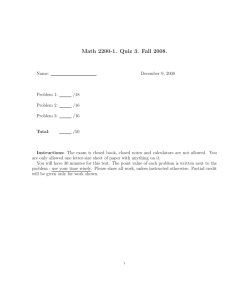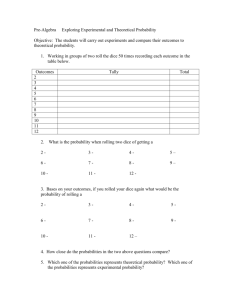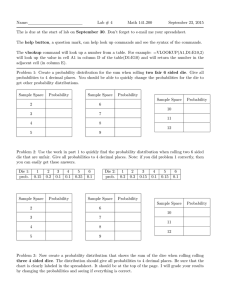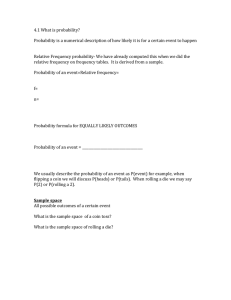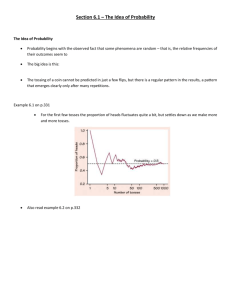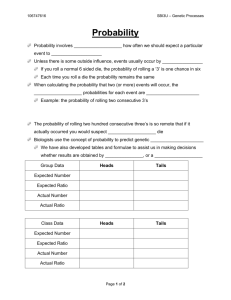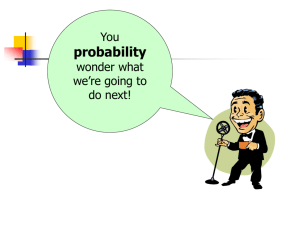THEORETICAL PROBABILITY
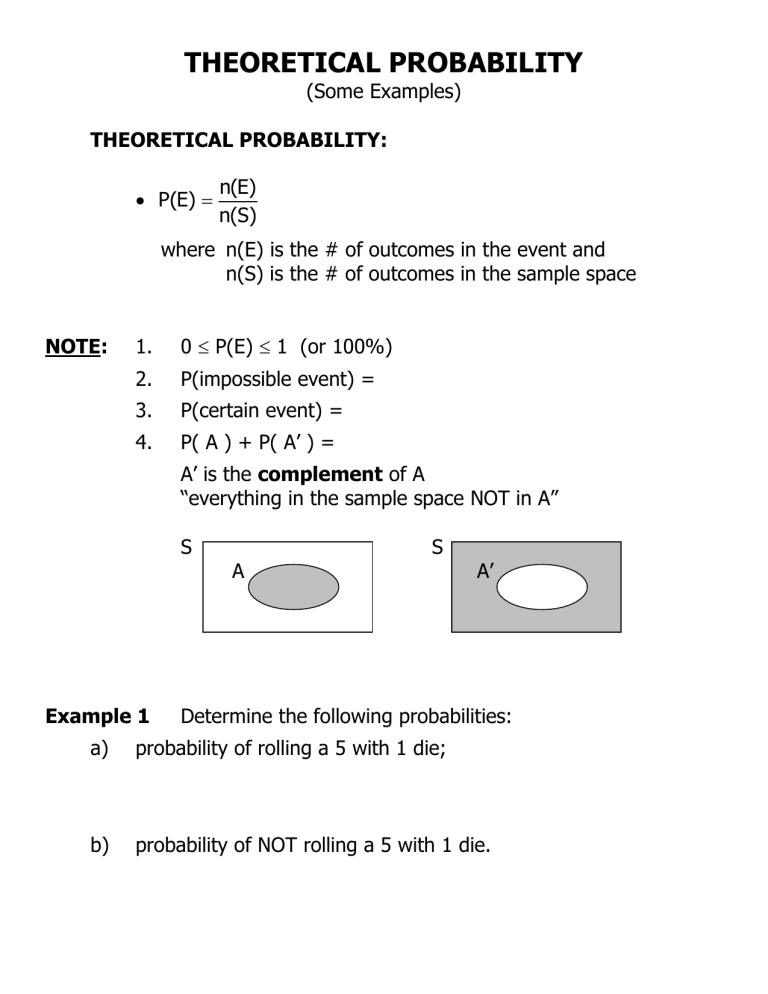
THEORETICAL PROBABILITY
(Some Examples)
THEORETICAL PROBABILITY:
P(E) n(E) n(S)
where n(E) is the # of outcomes in the event and
n(S) is the # of outcomes in the sample space
NOTE: 1. 0 P(E) 1 (or 100%)
2. P(impossible event) =
3. P(certain event) =
4. P( A ) + P( A’ ) =
A’ is the complement of A
“everything in the sample space NOT in A”
S
A
S
A’
Example 1 Determine the following probabilities: a) probability of rolling a 5 with 1 die; b) probability of NOT rolling a 5 with 1 die.
Example 2 Determine the following probabilities: a) tossing 2 heads with 2 coins; b) two identical tosses with 2 coins.
Example 3 Determine the following probabilities when drawing a card from a standard 52 card deck: a) the card is red; b) the card is a heart; c) the card is NOT a heart.
Example 4 Determine the following probabilities: a) rolling a sum of 8 with 2 dice; b) rolling at least one 3 with 2 dice; c) rolling a composite number with 1 die; d) rolling a sum that is a prime number with 2 dice.
Example 5 A restaurant owner records the frequency of customer visits in a given month. The results are recorded in the following table:
Number of Visits Number of Customers
1
2
3
4 or more
4
6
7
3 a) Determine the probability that a customer ate at the restaurant: i) exactly 3 times; ii) fewer than 3 times b) If 50 customers visited the restaurant during the next month, determine the number of customers that would be expected to eat there exactly 2 times.
Example 6 Using a TREE DIAGRAM to calculate probability.
Illustrate the possible outcomes of tossing 3 coins using a tree diagram.
Determine the following probabilities from the tree diagram: a) P(three heads) = b) P(two tails) = c) P(first toss being a tail) =
What is the assumption made in the calculations above?
HOMEWORK: p.312-313 #1cde, 4ab, 5, 6, 7ab, 8, 11a
